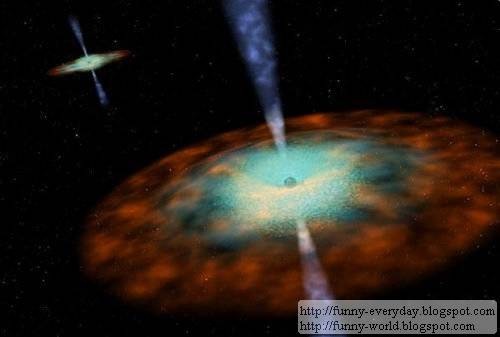A black hole is a region of space from which nothing, not even light, can escape. It is the result of the deformation of spacetime caused by a very compact mass. Around a black hole there is an undetectable surface which marks the point of no return, called an event horizon. It is called "black" because it absorbs all the light that hits it, reflecting nothing, just like a perfect black body in thermodynamics. Quantum mechanics predicts that black holes also emit radiation like a black body with a finite temperature. This temperature decreases with the mass of the black hole, making it unlikely to observe this radiation for black holes of stellar mass.

Black Hole
Despite its invisible interior, a black hole can be observed through its interaction with other matter. A black hole can be inferred by tracking the movement of a group of stars that orbit a region in space. Alternatively, when gas falls into a stellar black hole from a companion star, the gas spirals inward, heating to very high temperatures and emitting large amounts of radiation that can be detected from earthbound and Earth-orbiting telescopes.

Astronomers have identified numerous stellar black hole candidates, and have also found evidence of supermassive black holes at the center of galaxies. In 1998, astronomers found compelling evidence that a supermassive black hole of more than 2 million solar masses is located near the Sagittarius A* region in the center of the Milky Way galaxy, and more recent results using additional data find evidence that the supermassive black hole is more than 4 million solar masses.

No comments:
Post a Comment